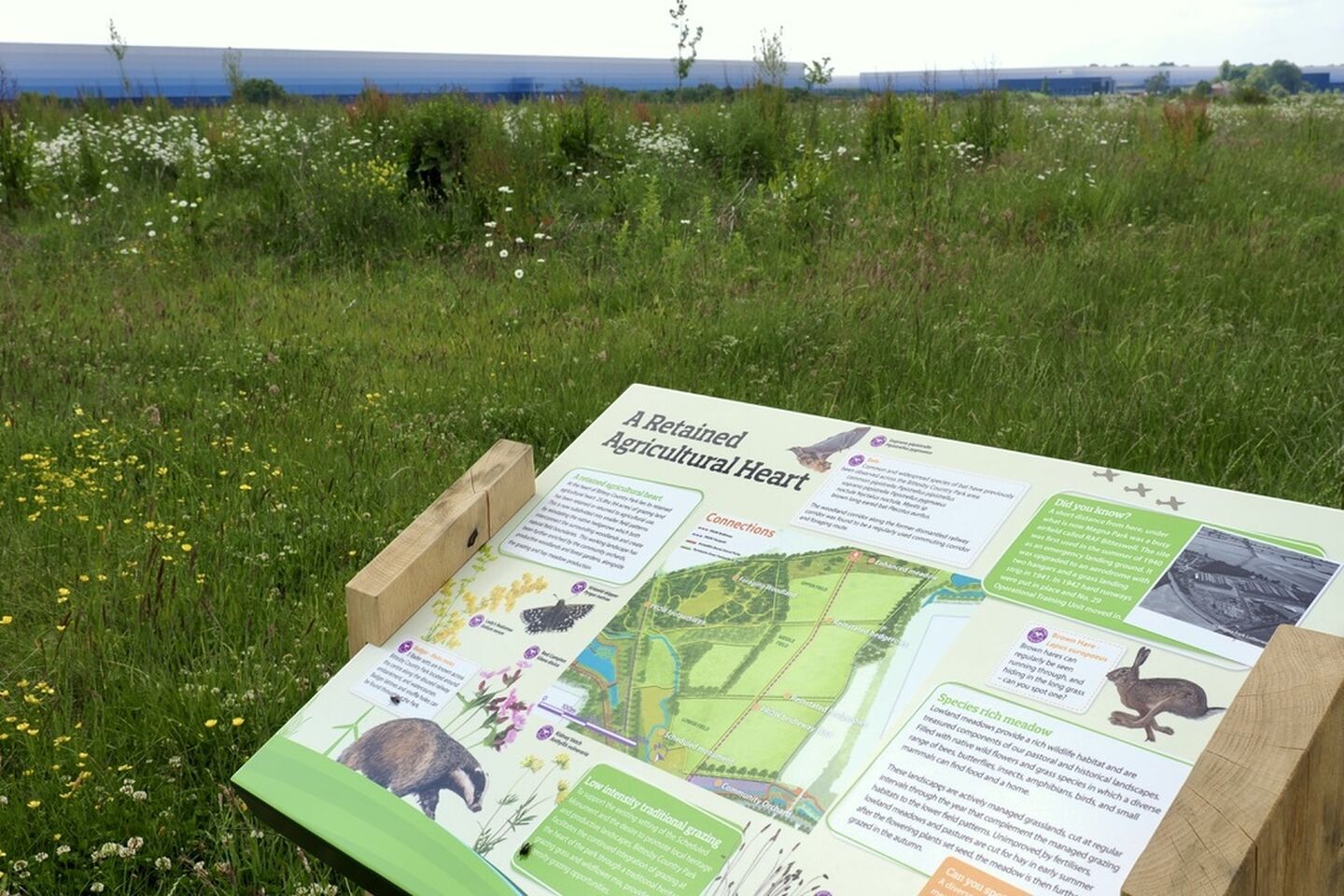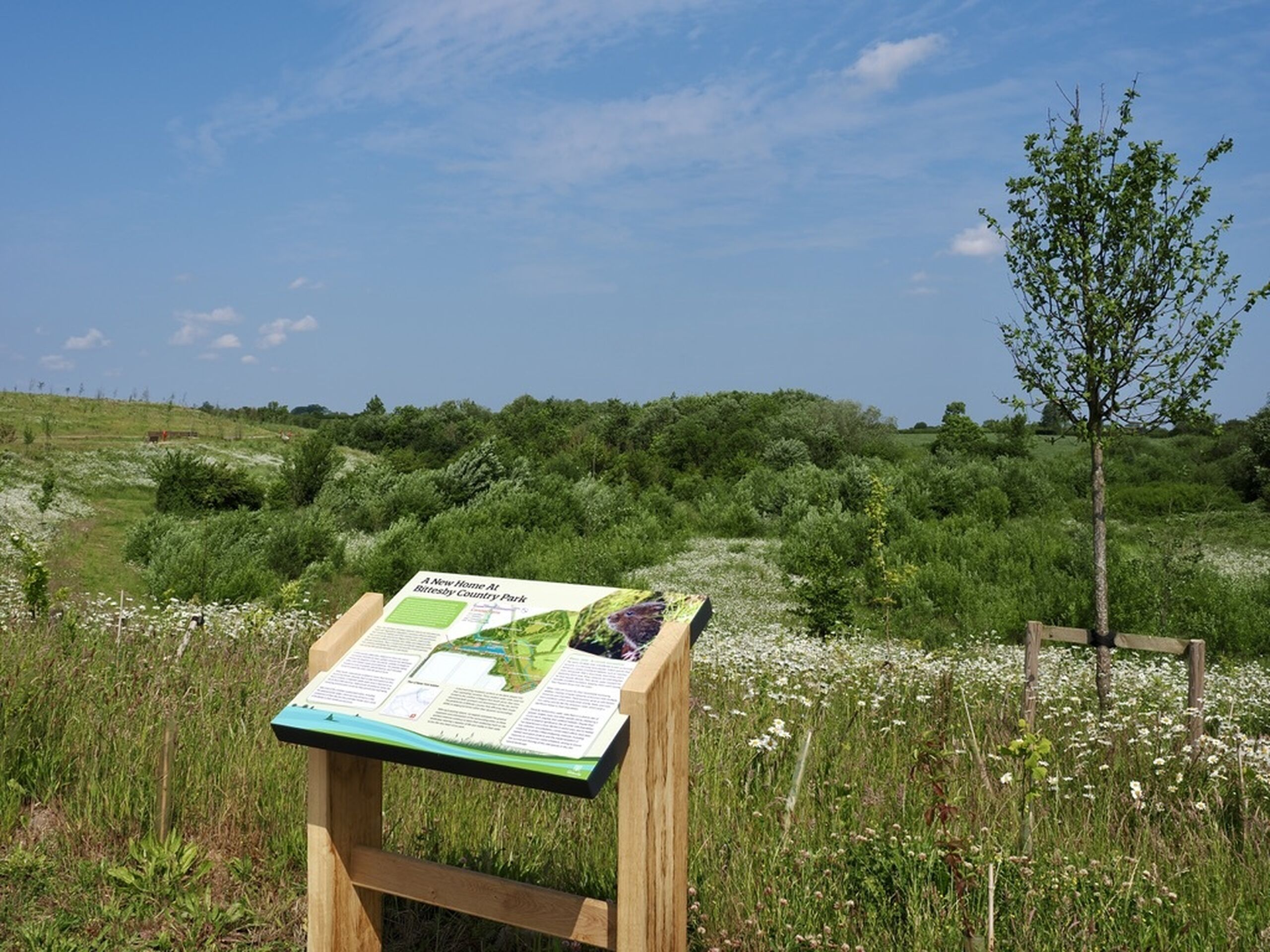

The vital role of Green Infrastructure in Logistics Parks
With growing concerns around climate change, food production, and energy use, the role of green infrastructure in logistics park masterplanning has never been more relevant. However, it must be applied with reference to scientifically and economically proven models. This allows outcomes to be predicted and supports the acceptance of green infrastructure as a mature and credible tool for problem solving.
Finding a harmonious balance between nature recovery strategies and productive agriculture is critical if we are to avoid potential friction between biodiversity enhancement and increased food production. Add the complexities of adjacent infrastructure and the 24/7 servicing of Europe’s largest logistics park, and finding a harmonious balance becomes essential.
Following a recent visit to review the landscape maturation at Bittesby Country Park – a 200 acre country park we have designed for GLP as part of the wider Magna Park logistics park near Lutterworth - I left feeling it is indeed possible to balance all these seemingly competing interests. It’s achievable by supporting their individual needs through the creative integration of nature-based solutions, community land stewardship and sustainable farming management practices.
Creating a New Country Park. Film Credit: Take One Productions
During my walk I thought back to my initial site visit some 10 years earlier. I recall the apparent lack of general flora and fauna, walkable routes, and accordingly lack of people. Now, it was a very different experience. I could photograph dancing dragonflies, soaring buzzards and busy pollinators, all whilst listening to the rhythmic bursts of trills and shrills of reed warblers. My joy of connecting with nature was elevated by the opportunity to meet and talk with other countryside walkers and listen to their appreciation of this extensive transformational landscape. Bittesby Country Park is still very much in its juvenile years, but you can sense the fostering of community comprising of local residents, logistic staff and, most importantly, the appreciation of regional wildlife.
Nature recovery at Bittesby Country Park is supported through several targeted strategies, including nature corridors, biodiversity enhancements, and local stakeholder collaboration. The goal was to improve ecological connectivity and resilience within and around the park by integrating green spaces, new water bodies and wildlife habitats. Through these principles and practices, the new park plays a significant role in nature recovery and contributes to a more resilient and biodiverse landscape.
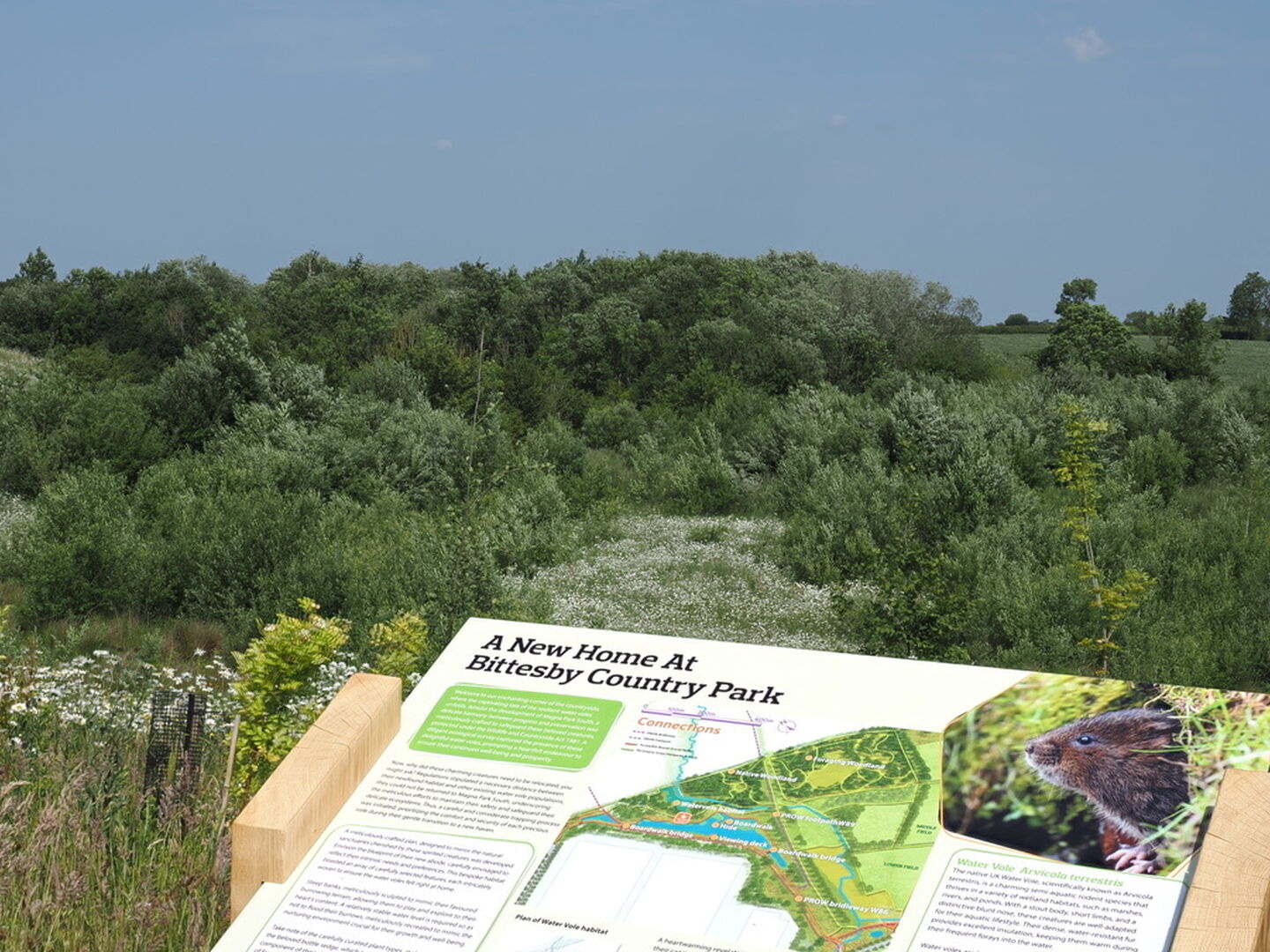
Creating landscapes where nature thrives alongside logistics businesses, is quickly rising up the agenda for many UK investors and owners. Significantly supporting ‘landscape first’ masterplanning through a holistic design approach, often results in well considered and integrated parks, supporting ‘nature first’ developments.
Protecting the natural environment should be a major consideration in all development projects. The mandatory ten percent Biodiversity Net Gain (BNG) requirement ensures that developers, at the masterplanning stage, must consider the loss of natural habitats. Thought needs to be given to how a scheme can be designed to enhance and deliver a diverse eco environment and support nature. This is a challenge faced by all developers, and particularly the logistics sector, given the scale of developments.
Nature recovery and farmland management are not mutually exclusive and can be complementary, but they often present competing demands on land use. Nature recovery aims to restore and protect natural habitats and biodiversity, while farmland management focuses on food production and rural economic activities. Finding a balance between these two requires careful planning and collaboration, as both are essential for a healthy environment and a thriving rural economy.
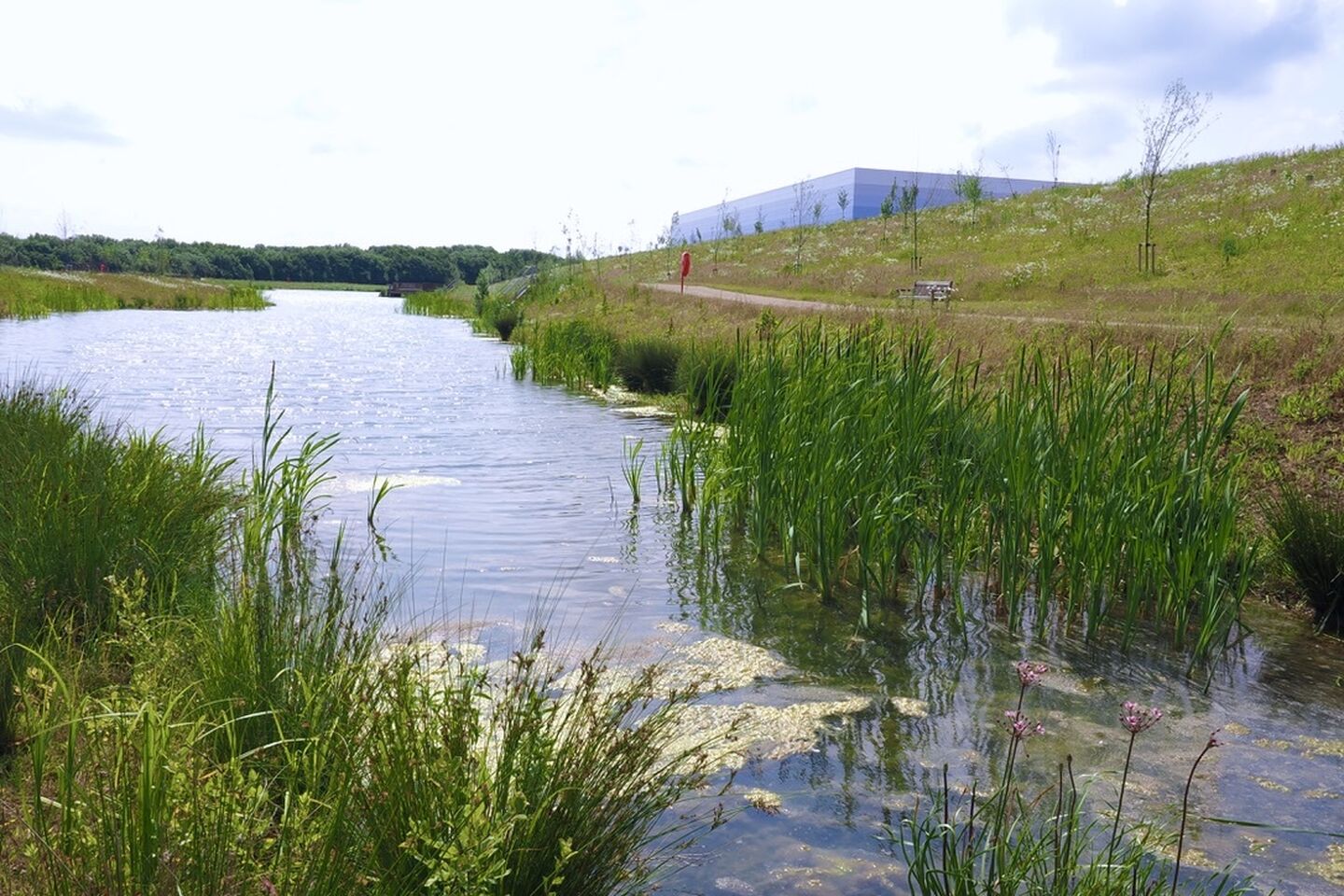
At Magna Logistics Park the positive landscape features include a protected country park area including preserved heritage, retained watercourses and water quality through new aquatic and wetland habitats, meadow and pastureland. Biodiversity has been increased, and the extensive planting proposals are supporting a targeted net reduction in carbon emissions. Tree planting on landscaped banks is supporting new habitat linkages, enhancing visual screening from the A5, and helping to reveal heritage features. The wider proposals are also starting to support a number of leisure and amenity benefits for the wider community.
Reflecting on my walk, the key takeaways were:
• Biodiversity Enhancement: A nature recovery approach is crucial for protecting and restoring species and habitats, addressing the decline of many UK species.
• Nature-based Solutions: Healthy ecosystems provide essential services like pollination, soil health, and water purification, which are vital for food production and human well-being.
• Climate Change: Nature-based solutions and significant scale landscape habitats such as extensive meadows, new woodland and expansive wetlands, can, in the long term, play a significant role in carbon sequestration, helping to mitigate climate change.
• Resilience: A diverse and healthy natural environment is more resilient to climate change and other environmental stresses.
• Heritage Narratives: Traditional farming practices are an important part of rural culture and heritage reconnecting people, nature and the land.
• Nature Recovery Networks: Creating a network of interconnected habitats and land sharing between farmland, infrastructure and logistics plots can help species recover and thrive.
• Rewilding and Sustainable Farming: Rewilding initiatives can involve reintroducing native species, restoring natural habitats, and managing land with lower intensity grazing to support biodiversity.
• Collaboration: Working together with farmers, communities, business owners and investors, is essential for successful nature recovery.
Maybe, the most important takeaway is more of a question: As investors, owners, developers, farmers and designers how do we best support the UK’s ‘30by30’ target on land?
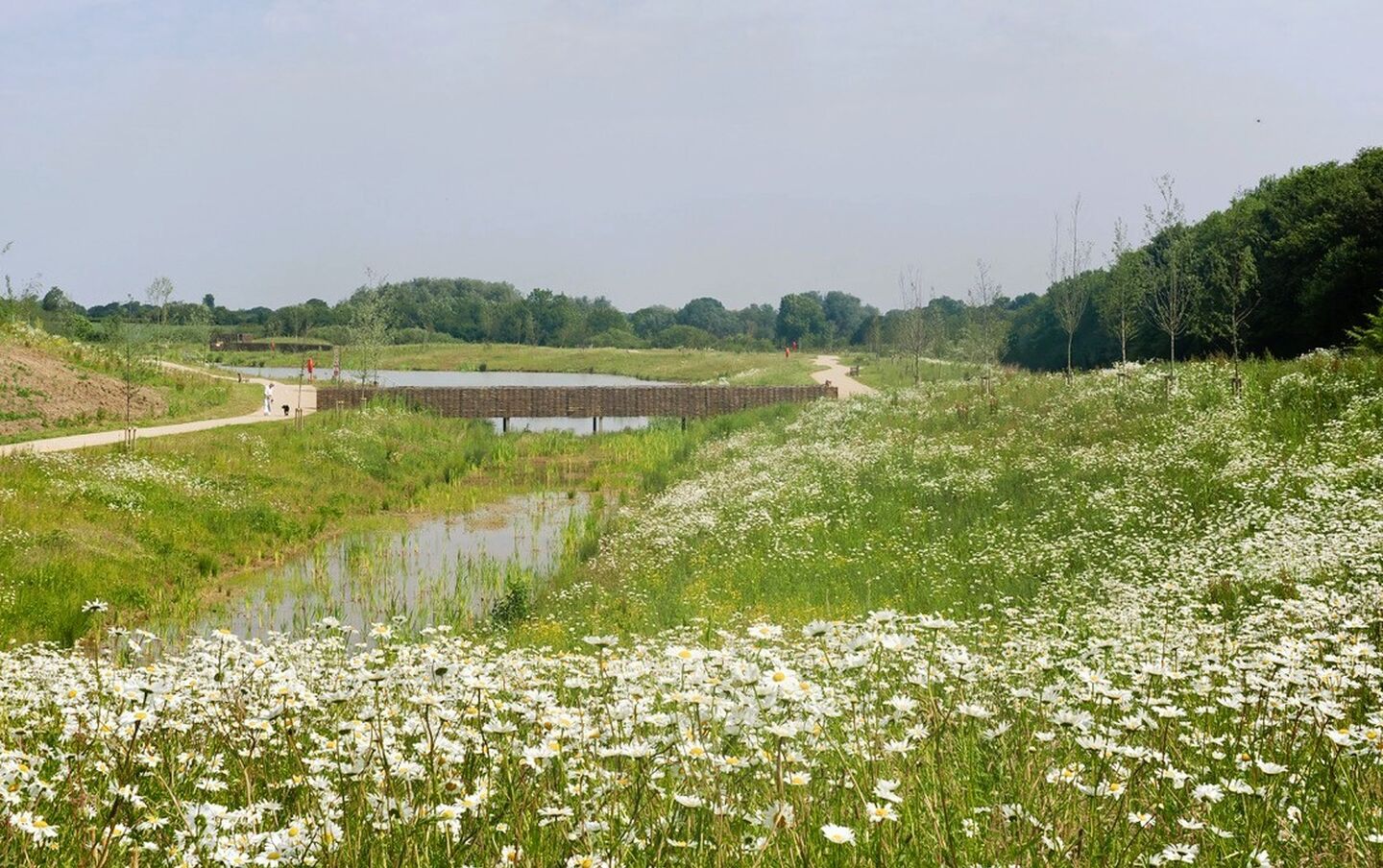
The collaboration and holistic masterplanning at Magna Park provide the scale of opportunity that triggered high-integrity nature investment. This, in turn, enables land managers to profit from delivering infrastructure and serving public needs, ultimately supporting the UK’s ability to meet its biodiversity targets.
Without nature there is no economy, no food, no health and no society. As the impacts of climate change grow, ‘30by30’ will also support the nature-based solutions that will help us to achieve net zero, and ensure that our natural environment is resilient and able to adapt.
Nature recovery through sustainable agriculture, backed by private green finance and Nationally Significant Infrastructure, requires collaborative, scaled nature investment strategies that drive economic growth in the short, medium, and long term.
